Self-Guided Tour for the History Buff
Kane was founded in 1864 by Civil War General Thomas L. Kane.
Kane has 4 buildings in the national historic register:
Thomas L. Kane Memorial Chapel (1978), built 1876-1878
New Thomson Building (1984), built 1907
Kane Manor Inn (1986), built 1896
Kane Armory (1991), built 1922
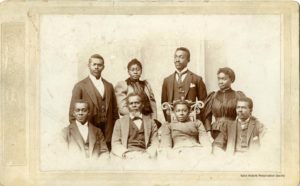
Scipio Young was a prominent member of Kane – some consider him and his family to be the “second founding family” of the town because they were here from the beginning with General Thomas Kane. Young grew up a slave but ended up running away and meeting General Kane during the Civil War in the Union army. General Kane brought Young with him when he came back to Kane and together they built the town. He eventually borrowed money from Kane and started a barbershop and billiard hall in 1887. The location of his businesses is now what is 54 Fraley Street – the Chamber of Commerce. If you look at the center of the top of the building, you can still make out where it said “S. Young”, but it has been painted over. Scipio died at the age of 101 as a very wealthy man. Because of the influence of General Thoman Kane, the town of Kane has always been inclusive of all people.
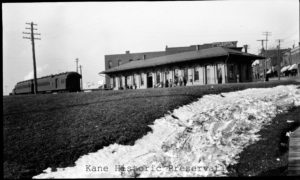
A great stop to make early in the day is the Kane Historic Preservation Society located at the Depot. The Depot is a local museum of the history of Kane and has a gift shop with books, toys, jewelry, and much more. The Kane Depot building was built originally in 1871 and was a passenger station for the Pennsylvania Railroad. The last passenger train went through in 1967, then the building was used through the 1980s by the railroad and Knox/Kane railroad for storage and freight office. The Preservation Society acquired the Depot in 1995.
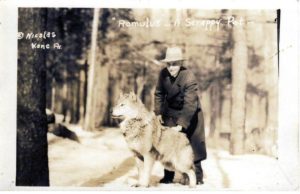
Also located within the Depot is the McCleery Wolf Center. Here you will learn all about the Lobo Wolves that used to reside in Kane. The wolves were brought here by Dr. McCleery, father of the endangered species movement in America, starting in 1921. Today there are over 30 wolves in the pack in Bridger, MT. (open May-Dec, Saturdays 11-5, Sundays 12-4, or by appointment.)
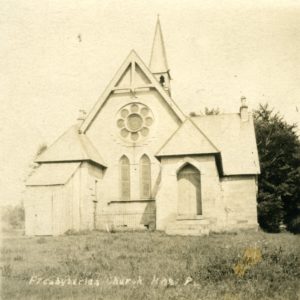
Down a few blocks from the Depot, you will find the Thomas L. Kane Memorial Chapel. This small chapel was constructed from 1876 – 1878 and became the first Presbyterian church in McKean county. The land was donated by Thomas L. Kane and was buried here after he passed in 1883 per his request. The statue of General Kane which stands outside is a twin to the statue standing in the Utah state capitol building. 1978 became part of the historic register. In 1970 the Mormons bought the chapel and ran it as a memorial to Thomas L. Kane. General Kane was not Mormon, but he advocated for their safety, and so they revered him. Years later, in 2014, the Mormons donated the chapel to the Kane Historic Preservation Society. Tours can be requested by contacting the Kane historic preservation society via phone or website.
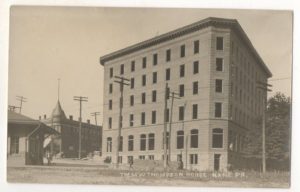
The New Thomson House, on the corner of routes 6 and 66 across the street from the Depot, was built in 1907 built by John Flemming. The building which was previously the Penn-Kane Hotel is a 6 story building, which makes it the tallest building in Kane. At first, the building was used as a hotel for quite some time but has now been turned into apartments. Walk into the lobby to see the grand staircase and the old elevator cage. The New Thompson House joined the national historic register in 1984.
The Kane Armory was built in 1922 and was the former home of the National Guard regiment. It was added to the national historic register in 1991.
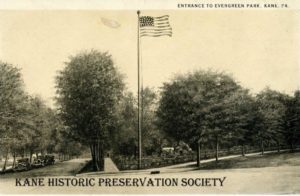
Memorial Point at Evergreen Park was built after WW1 as a war memorial for soldiers. It originally had a cannon at the point, and now it is a mystery where this cannon went. Memorial Point went under renovation in 2020 and will be rededicated on Memorial Day weekend in 2021.
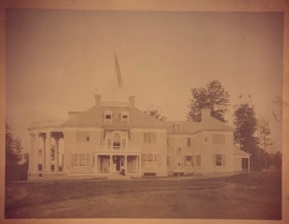
If you are inclined to book a room for a night or two, stay at the historic and newly renovated Kane Manor Inn. This was the home of Dr. Elizabeth Kane, wife of civil war general Thomas L. Kane, and was erected in 1896. This home was built by Elizabeth after the original Kane homestead burnt down and General Kane passed away. The style of the home is known as the Georgian Colonial Revival. You may notice the word “Anoatok” on some of the signs. Elizabeth referred to her home as the Anoatok, which is an Eskimo word for “wind love spot”. She coined this name for the home after her husband Thomas’s love for Alaska. If you are a paranormalist, there are legends of this home being haunted as well. The home was sold from the Kane family in 1983 and is now under the care of Ben and Debra Miller. Feel free to stop in and learn more about the history of this beautiful Manor even if you decide against staying the night.
The location of the original Kane homestead is on Route 321 where the high school now stands. If you are on the stage in the auditorium of the school, you would be standing where the front porch was.
All the above-mentioned places are within walking distance of each other, but you can also hop in your car and check out the following:
Kinzua Bridge State Park is a 15-minute drive from Kane through Mt. Jewett. The bridge was built by Kane’s founder Thomas L. Kane in 1882 and was partly demolished in July 2003 by a tornado. When it was built it was advertised as the 8th wonder of the world because it was the tallest bridge ever built at 301 ft tall (at the time) and was built in just 90 working days. It became part of the New York, Lake Erie, and Western Railway to bring coal from Elk County. Walk on the remaining part of the bridge, learn the history of the bridge and its collapse in the new visitors center and gift shop, or hike one of the trails that stem right from the state park.
As you are driving on Route 6 toward the Kinzua Bridge, look to the right for a blue historic sign about a mile after you pass the little white church. It is almost exactly 5 miles outside of Kane. This was the location of Dr. McCleery’s wolf farm. The original stone arch is still standing, but the rest is now private property, so please admire it from a distance.
About 30 miles north of Kane is Bradford, PA. Located here are a handful of places you may want to visit. The ANF Visitors Bureau Welcome Center & Gift Shop include a wealth of information about the national forest in which we live. The Penn Brad Oil Museum is located right outside of Bradford and was the first billion-dollar oil field. Schedule a guided tour and learn all about “Music Mountain”. And finally, stop at the Zippo/Case Museum and Flagship Store. Experience the rich history of Zippo lighters and Case knives; two American icons when it comes to “made in America”.
Struthers Library Theatre, the nation’s 18th oldest theater, is located in Warren, 30 miles north-west of Kane. In 1882, Thoman Struthers offered to erect a library building that would house a public library as well as rental spaces, including a public hall. The building was completed in 1883 and now welcomes many quality performers.
Also, check out the interviews with the Kane Historic Preservation Society featured during our 100 Days of Kane:
- Day 6: Story of the Depot
- Day 13: Stories About Our Founders
- Day 20: Lobo Wolves Being Saved in Kane
- Day 27: The Memorial Chapel – Part 1
- Day 34: Stories of Kane during WWII
- Day 41: Scipio Young
- Day 48: The Penn Kane Hotel
- Day 55: Jarvis and Norman Rockwell
- Day 62: Glass Factory Stories
- Day 69: The Memorial Chapel – Part 2
- Day 76: Kane Family Artifacts and War
- Day 83: The Holgate Brothers Company
- Day 90: The Kane Manor
- Day 97: 3 Short Stories from Kane’s History
For more information about the history of Kane, please contact the Historical Preservation Society at kanehistoricpreservationsociety@outlook.com or call them at 814-837-8752.
Click here for a printable version of the itinerary with addresses of the places mentioned above: A self-guided tour for the History Buff.
